
Petr Horák: The Ladislav Klíma Institute in the Gap on Perštýna
AVU Prague, head: Prof. Přikryl
Jury evaluation: On one of the most challenging mini-parcels in Prague, the author designed an exceptional concept for a memorial to a prominent figure in Czech philosophy and literature, Ladislav Klíma. Using minimal spatial requirements, the object meets the demands of a memorial while also serving as a cultural institute for an unjustly overlooked personality. The jury highly valued the originality and artistic solution of the proposal.
Ladislav Klíma (August 22, 1878 - April 19, 1928)
Philosopher Ladislav Klíma noted in his memories of childhood that at the age of fifteen he felt - I am all-powerful. Throughout his life, he never abandoned his conceptual philosophy regarding the continuity of heroic humanity, expressed by the equation: I = I = God = Freedom. He aspired to become God. Today, 78 years after his death, although he is considered the most original Czech philosopher, he remains almost unknown.
His difficult-to-read essayistic, poetic, and aphoristic style, extreme anthropologism, along with his balancing on the unclear boundaries of genius and eccentricity, make him difficult to understand. Nevertheless, the significance of his work undoubtedly transcends the borders of Bohemia.
Klíma is thus primarily concerned with seeking answers to four fundamental metaphysical questions. He departs from metaphysical categories. Truth and falsehood, good and evil are subordinated to higher principles of thought. The concepts of reality and truth were, for Klíma, bonds that he wished to bind the spirit's wings, fearing its flight into the infinite - the undefined - the unreal.
He boldly formulated the thesis "The world does not exist": "It seems to us that we seem to feel that something is - the only thing we know exists are our mental states.
He demanded a return to ancient pre-Socratic thinking, particularly to Heraclitus. (His idea of play - God as a child playing with the world.) Klíma's Freedom is "a free play on the ruins of a free world. Man is not condemned to it. It is a path which the subject has the option to choose.
The Gap at Perštýn
Klíma was a convinced homeless person. He had no relationship with the place where he lived. He changed his residence many times. He even got rid of inherited houses. The plot was therefore chosen more for its good accessibility in the center of Prague and for its extreme conditions.
The Design
In designing the building, I could not rely on the original footprint of the object. The situation is currently so different that this solution is no longer possible. The existing boundary of the land at full occupancy essentially creates the same problem - it does not connect the old and the new, it merely collides with itself. This is most apparent when viewed from Národní street. The new building overly suppresses the older one. Such a solution did not satisfy me in the Old Town. I therefore utilized the picturesque nature of the gap itself, the atmosphere of the old courtyards, and made it a part of the city. Instead of a house, a street. Instead of a memorial plaque, a temple.
I divided the institute into two parts. I conceived the first as a memorial and the second as a building for the Klíma Foundation.
I designed the memorial in the form of a wide staircase filling almost the entire plot. Klíma was one of the "wandering philosophers." It is a path upward along the axis I = I = God = Freedom. An ancient path to a temple that does not exist. A path, in the ruins of a free world, on which the subject has the option to choose.
Klíma despised architecture. The only mentions of buildings are in his novels, where he lets his wandering characters crawl through caves, get lost in dark cellars, dungeons,… A part of the memorial - a small museum, possibly a space for exhibitions, I therefore placed underground beneath the stairs in accordance with Klíma's words: "...we are just moles. Only in darkness can we occasionally glimpse a narrow strip of light…
The building of the foundation - a 2.5m wide house stuck to the northern side of the neobaroque neighboring apartment building, is primarily composed with respect to the view from the intersection of Na Perštýně street with Národní Boulevard. It is a view almost perpendicular to its gable wall. Here, the insensitivity and brashness of the intervention in the 19th century is most revealed. I tried to transform this deficiency into an advantage and create this facade as the main one in accordance with the poetics of a blind gable wall.
The core of the foundation consists of a library. Books and disorganized texts are Klíma's only material legacy. The core of his bequest. The minimal width and high volume of the building make it almost one large staircase. By elevating several rooms, I aimed to achieve a generosity of space in a small area. Variations of stairs then create a more intense spatial experience when passing through the building. A system of corridors and views guarding the philosopher's legacy from above.
Construction and Materials
Outdoor stairs are made of stone from granite blocks.
The foundation building consists of a reinforced concrete sandwich construction combined with translucent concrete in the non-load-bearing parts of the southern facade.
The underground parts are made of reinforced concrete.
Reflection
I aimed to transpose Klíma's theses into architecture. Since these are extreme positions, they are primarily metaphysical, and as such, they resist being carved into stone. Architecture can only hold clear and direct messages if they are also meant to speak to others. I chose the path to Freedom and the darkness underground in which one can see light. Thus, I did not present Klíma in his entirety, but perhaps a disturbing feeling will remain that evokes a desire to become acquainted with the work of the man to whom the building is dedicated.
Ladislav Klíma is not remembered in Prague in any way. Today, in an era of rising individualism, it is good to become better acquainted with the philosopher who paved the way of absolute individualism and to observe where it led him.
The English translation is powered by AI tool. Switch to Czech to view the original text source.
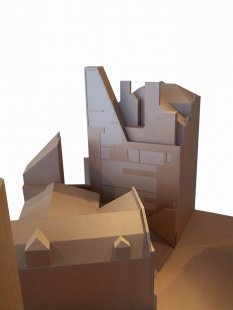
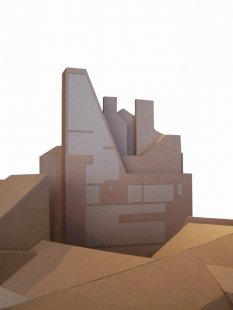
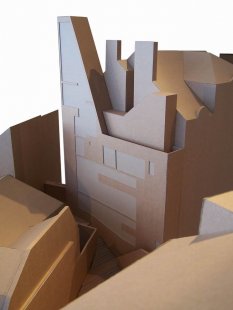
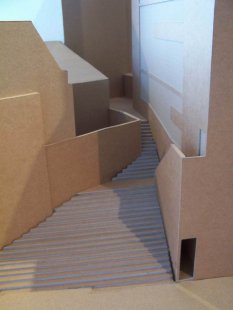
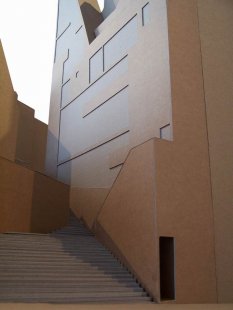
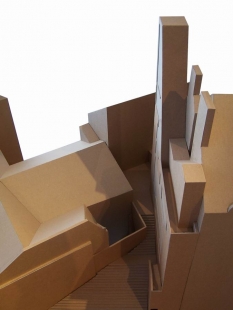
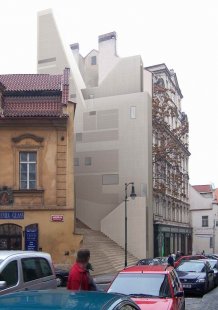
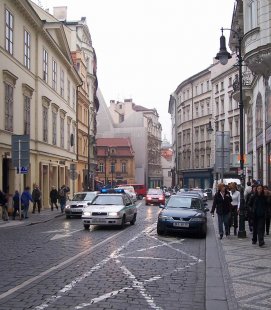
0 comments
add comment










